Abstract
Posterior pupillary synechiae affect a proportion of eyes subjected to iridectomy with or without drainage operation because (1) aqueous humour bypasses the pupil; (2) traumatic iridocyclitis occurs; (3) there is immobility of the iris in the iridectomy sector; (4) in eyes with angle closure glaucoma closer apposition of the iris to the anterior lens capsule increases the tendency; (5) pilocarpine aggravates (4) both in angle closure glaucoma and open angle glaucoma and produces a small immobile pupil facilitating pupillary membrane formation (occlusio pupillae). Pilocarpine should be avoided if possible as medical treatment at any time after a drainage operation. A beta blocker is the drug of choice. To eliminate posterior synechiae over a fair number of degrees of pupil (say 30 degrees) sector iridectomy can be done.
Full text
PDF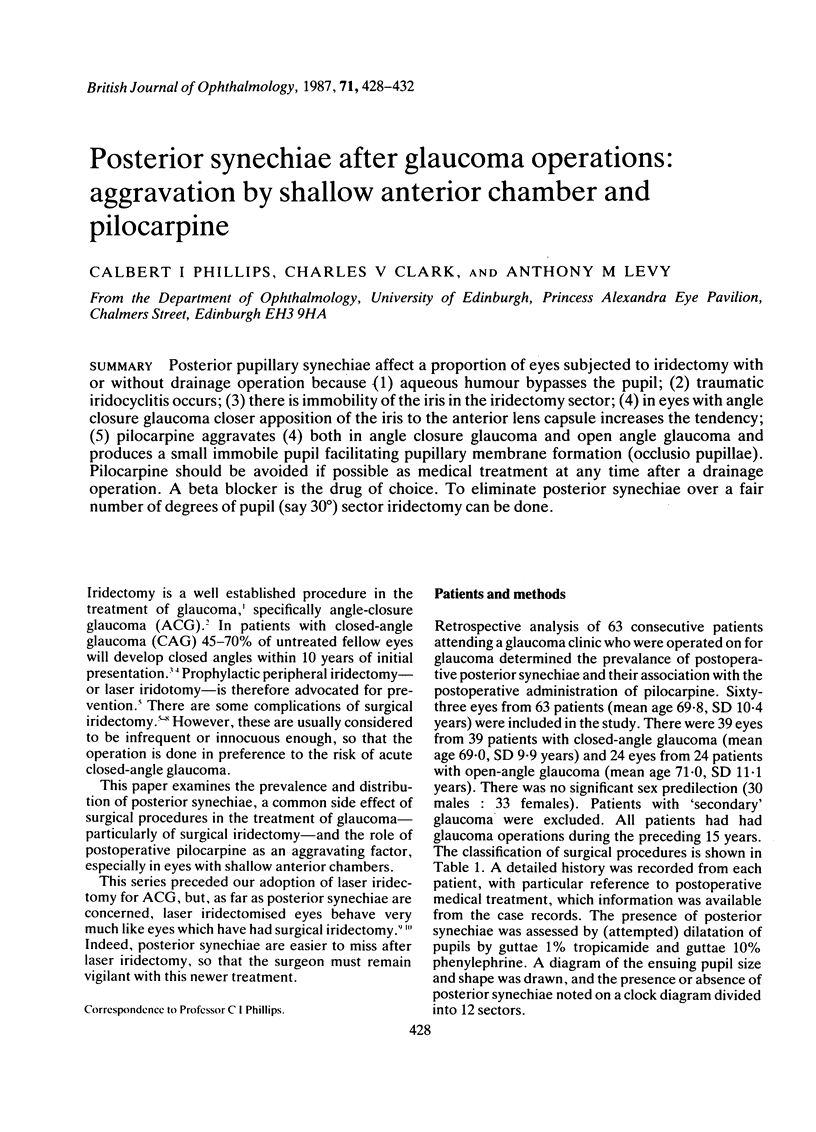
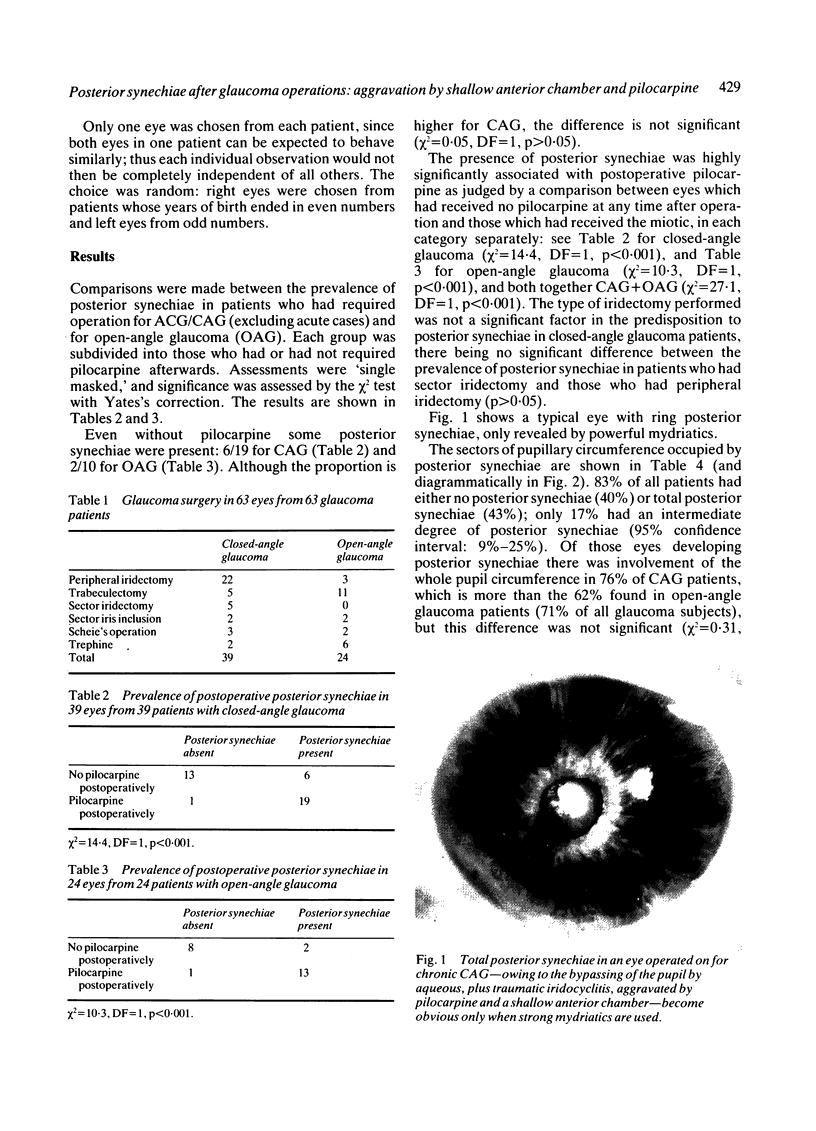
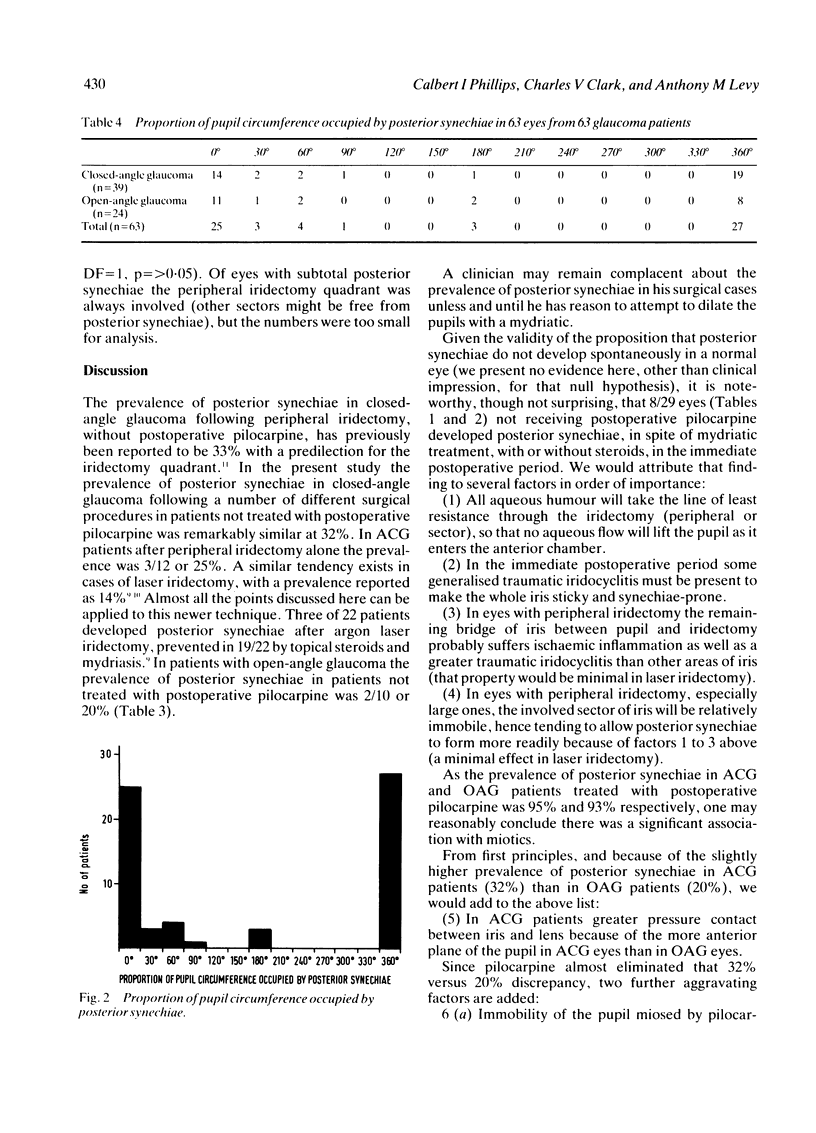
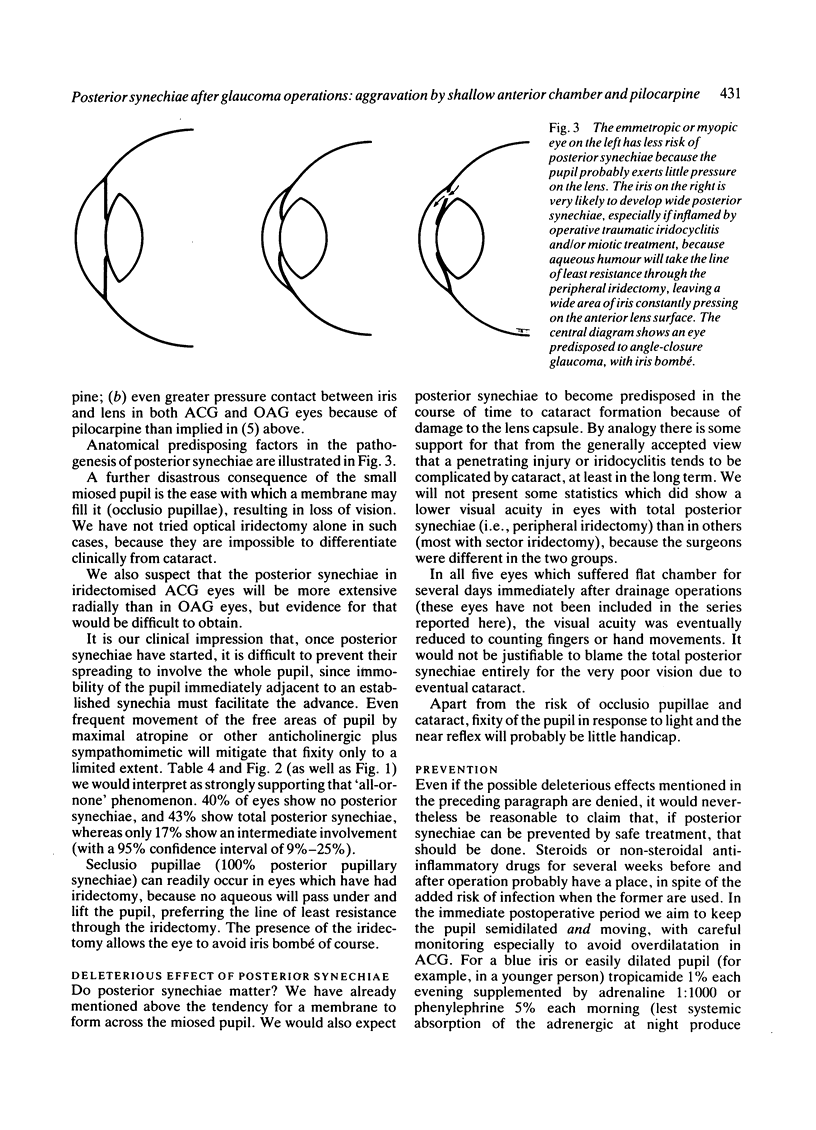
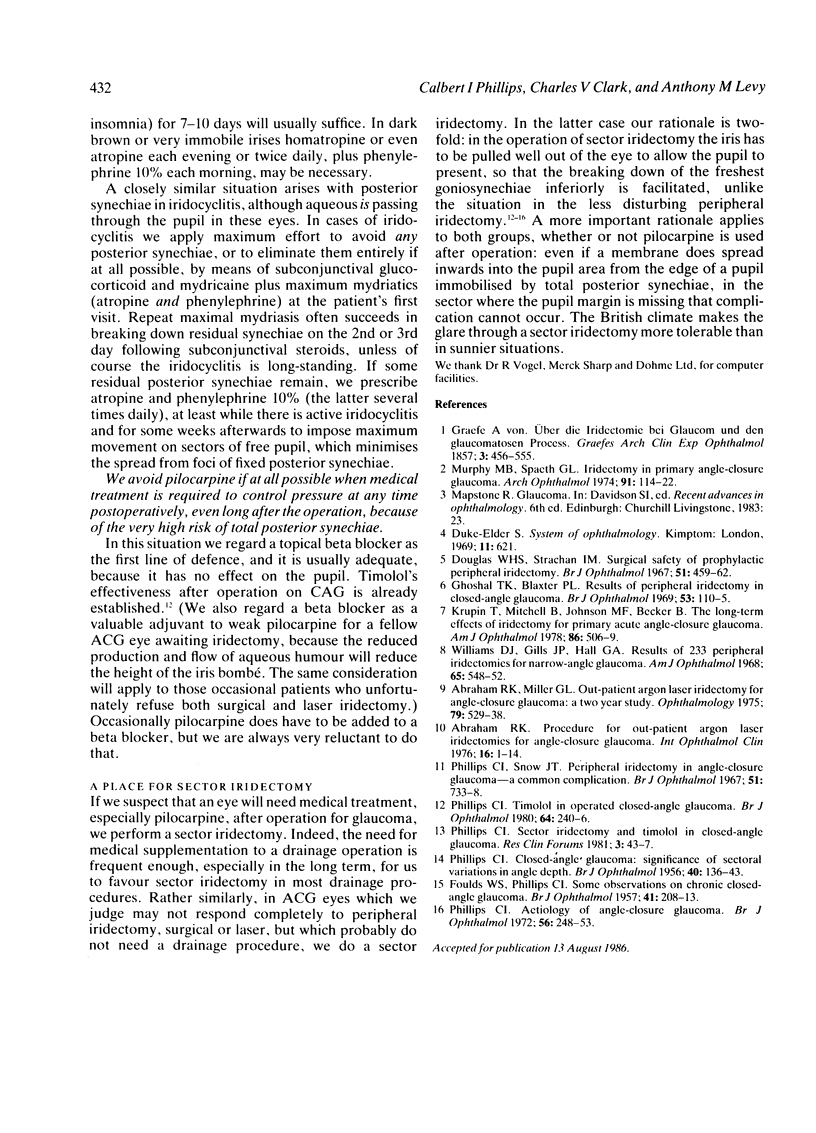
Images in this article
Selected References
These references are in PubMed. This may not be the complete list of references from this article.
- Abraham R. K. Procedure for outpatient argon laser iridectomies for angle-closure glaucoma. Int Ophthalmol Clin. 1976 Winter;16(4):1–14. [PubMed] [Google Scholar]
- Douglas W. H., Strachan I. M. Surgical safety of prophylactic peripheral iridectomy. Br J Ophthalmol. 1967 Jul;51(7):459–462. doi: 10.1136/bjo.51.7.459. [DOI] [PMC free article] [PubMed] [Google Scholar]
- FOULDS W. S., PHILLIPS C. I. Some observations on chronic closed-angle glaucoma. Br J Ophthalmol. 1957 Apr;41(4):208–213. doi: 10.1136/bjo.41.4.208. [DOI] [PMC free article] [PubMed] [Google Scholar]
- Ghoshal T. K., Blaxter P. L. Results of peripheral iridectomy in closed-angle glaucoma. Br J Ophthalmol. 1969 Feb;53(2):110–115. doi: 10.1136/bjo.53.2.110. [DOI] [PMC free article] [PubMed] [Google Scholar]
- Krupin T., Mitchell K. B., Johnson M. F., Becker B. The long-term effects of iridectomy for primary acute angle-closure glaucoma. Am J Ophthalmol. 1978 Oct;86(4):506–509. doi: 10.1016/0002-9394(78)90297-0. [DOI] [PubMed] [Google Scholar]
- Murphy M. B., Spaeth G. L. Iridectomy in primary angle-closure glaucoma. Classification and differential diagnosis of glaucoma associated with narrowness of the angle. Arch Ophthalmol. 1974 Feb;91(2):114–122. doi: 10.1001/archopht.1974.03900060120007. [DOI] [PubMed] [Google Scholar]
- PHILLIPS C. I. Closed-angle glaucoma; significance of sectoral variations in angle depth. Br J Ophthalmol. 1956 Mar;40(3):136–143. doi: 10.1136/bjo.40.3.136. [DOI] [PMC free article] [PubMed] [Google Scholar]
- Phillips C. I. Aetiology of angle-closure glaucoma. Br J Ophthalmol. 1972 Mar;56(3):248–253. doi: 10.1136/bjo.56.3.248. [DOI] [PMC free article] [PubMed] [Google Scholar]
- Phillips C. I., Snow J. T. Peripheral iridectomy in angle-closure glaucoma: a common complication. Br J Ophthalmol. 1967 Nov;51(11):733–738. doi: 10.1136/bjo.51.11.733. [DOI] [PMC free article] [PubMed] [Google Scholar]
- Williams D. J., Gills J. P., Jr Results of 233 peripheral iridectomies for narrow-angle glaucoma. Am J Ophthalmol. 1968 Apr;65(4):548–552. doi: 10.1016/0002-9394(68)93872-5. [DOI] [PubMed] [Google Scholar]



